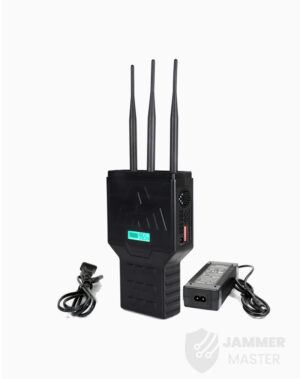
Buying Guide for Portable Signal Jammers
Key Takeaways Consideration Detail Product Weight Jammer Master’s portable jammers average 1.5Kg, significantly lighter than desktop models. Frequency Bands Capable of blocking multiple bands with
Free Worldwide Shipping & 1-Year Warranty!

In various examination settings, the full band signal blocker has emerged as a crucial tool in purifying the atmosphere of the examination hall and ensuring the fairness of the exams. This device should not be underestimated, as it serves as an effective aid in eliminating and preventing cheating during exams. With the high school entrance examination season upon us, schools are now selecting a batch of highly effective full band signal blockers to provide strong protection against cheating in this year’s exams. Everyone is pursuing a signal blocker with excellent blocking capabilities, and rightfully so. After all, the effectiveness of the signal blocker determines its ability to prevent cheating. So, what factors determine the effectiveness of a full band signal blocker? Let’s explore this further.
The effectiveness of a full band signal blocker depends on the strength of the mobile phone signals present at the testing site. This applies not only to examination halls but also to other scenarios. The effectiveness of a signal blocker in preventing cheating is directly related to the strength of the mobile phone signals in the vicinity. So, what factors influence the strength of these signals? Let’s delve into them.

Mini GPS Jammer & Power Bank Block GPS/GLONASS & CDMA Signals JM015
$599.00
Desktop All-in-One Signal Jammer Block Full Band Cellular/WiFi/GPS/LOJACK JM014
$899.00
Handheld WiFi Bluetooth Signal Jammer 2.4/5.2/5.8GHz JM012
$569.99
Full Band Desktop Signal Jammer Block Cellular/WiFi/GPS JM005
$1,365.99The strength of mobile phone signals at a given location depends on the distance to nearby base stations. This applies to both examination halls and other settings. The closer the distance between the signal source and the testing site, the stronger the mobile phone signals will be. Consequently, this weakens the blocking effect of the full band signal blocker. On the other hand, if the base stations are located far away from the testing site, the blocking effect of the signal blocker will be more effective.
The presence of signal amplifiers, such as indoor signal boosters, also affects the strength of mobile phone signals. These amplifiers act as signal sources and can either enhance or weaken the signals. If signal amplifiers are installed near the testing site, the mobile phone signals will be stronger, thereby reducing the effectiveness of the full band signal blocker. Conversely, if there are no signal amplifiers nearby, the blocking effect of the signal blocker will be more pronounced.
Based on practical surveys, it has been observed that a full band signal blocker can effectively block the entire classroom when the distance between the base station and the testing site is more than 200 meters. Therefore, it is crucial for schools to select full band signal blockers that can provide optimal blocking capabilities to ensure the integrity and fairness of examinations. By considering factors such as the proximity of base stations and the presence of signal amplifiers, schools can make informed decisions in choosing the most suitable signal blockers for their examination halls.
Our frequency checker tool will help you check all frequency bands used in all country.

Key Takeaways Consideration Detail Product Weight Jammer Master’s portable jammers average 1.5Kg, significantly lighter than desktop models. Frequency Bands Capable of blocking multiple bands with

In an age where the sky is dotted with drones, the importance of drone jammers has never been more significant. From commercial deliveries to personal

Protect your vehicle’s location privacy with a professional guide on GPS jammers. From selection to legal considerations and installation tips, we’ve got you covered. Key

Understanding Signal Blocker: How It Works and Its Applications Signal Blockers are devices that can disrupt mobile phone signals, preventing them from connecting to base

The Application and Benefits of High-Power Signal Jammers Enhancing Signal Blocking Efficiency in Various Environments In today’s technologically advanced world, the need for effective signal

Considerations for Purchasing Exam Room Signal Jammers Ensuring Effective Signal Jamming for Exam Integrity As the year approaches its end, many schools are preparing for

The Importance of Monitoring and Signal Interference Measures During Examinations During examination periods, it is crucial to closely monitor the examination venues and their surrounding

Selecting the Appropriate Cell Phone Jammer for Theaters and Auditoriums Overcoming Challenges in Installation and Maximizing Signal Disruption The Importance of Cell Phone Jamming in

Remote Control of Cell Phone Jammers via Smartphone: A Possibility? With the rapid development of the Internet of Things (IoT), numerous smart home devices have